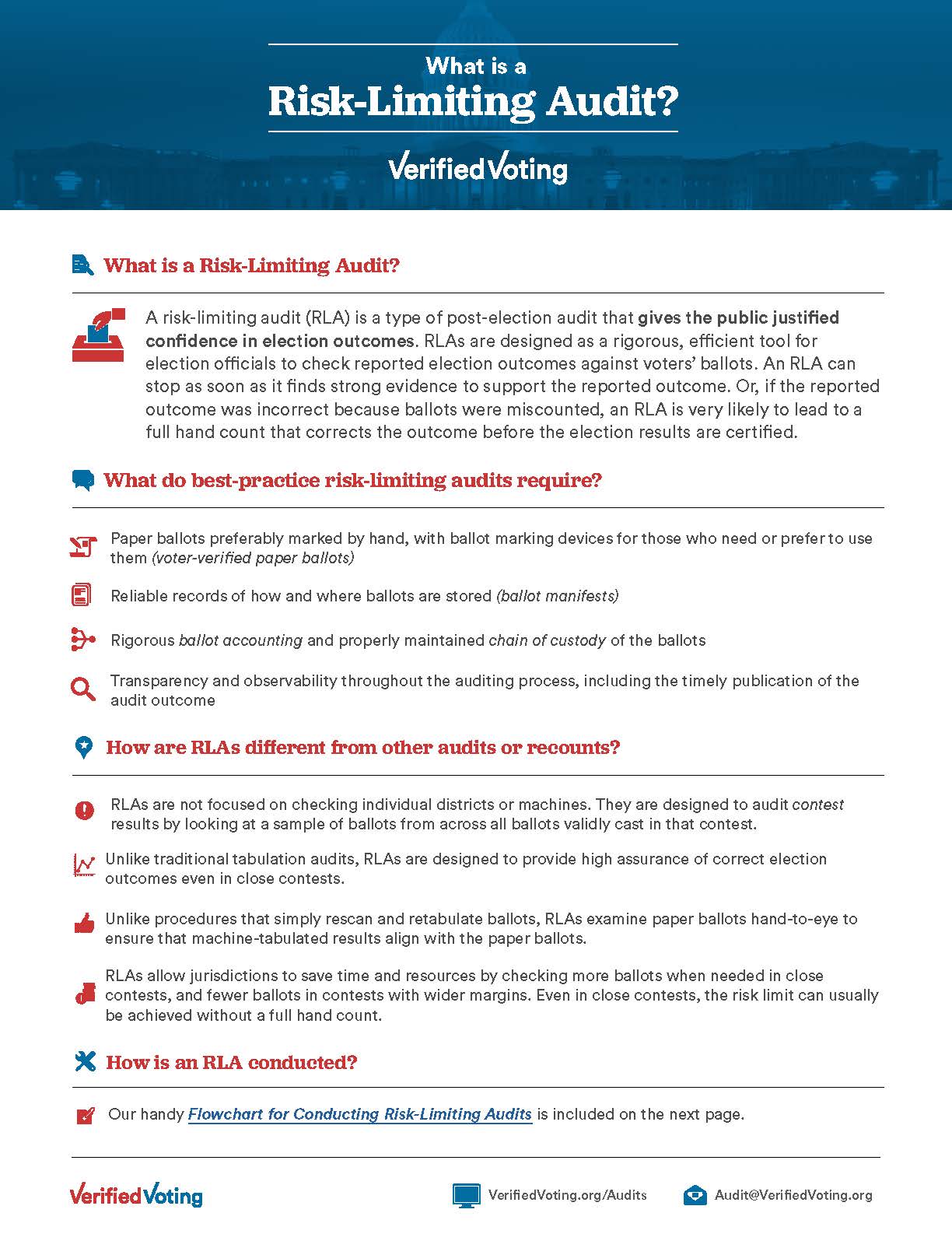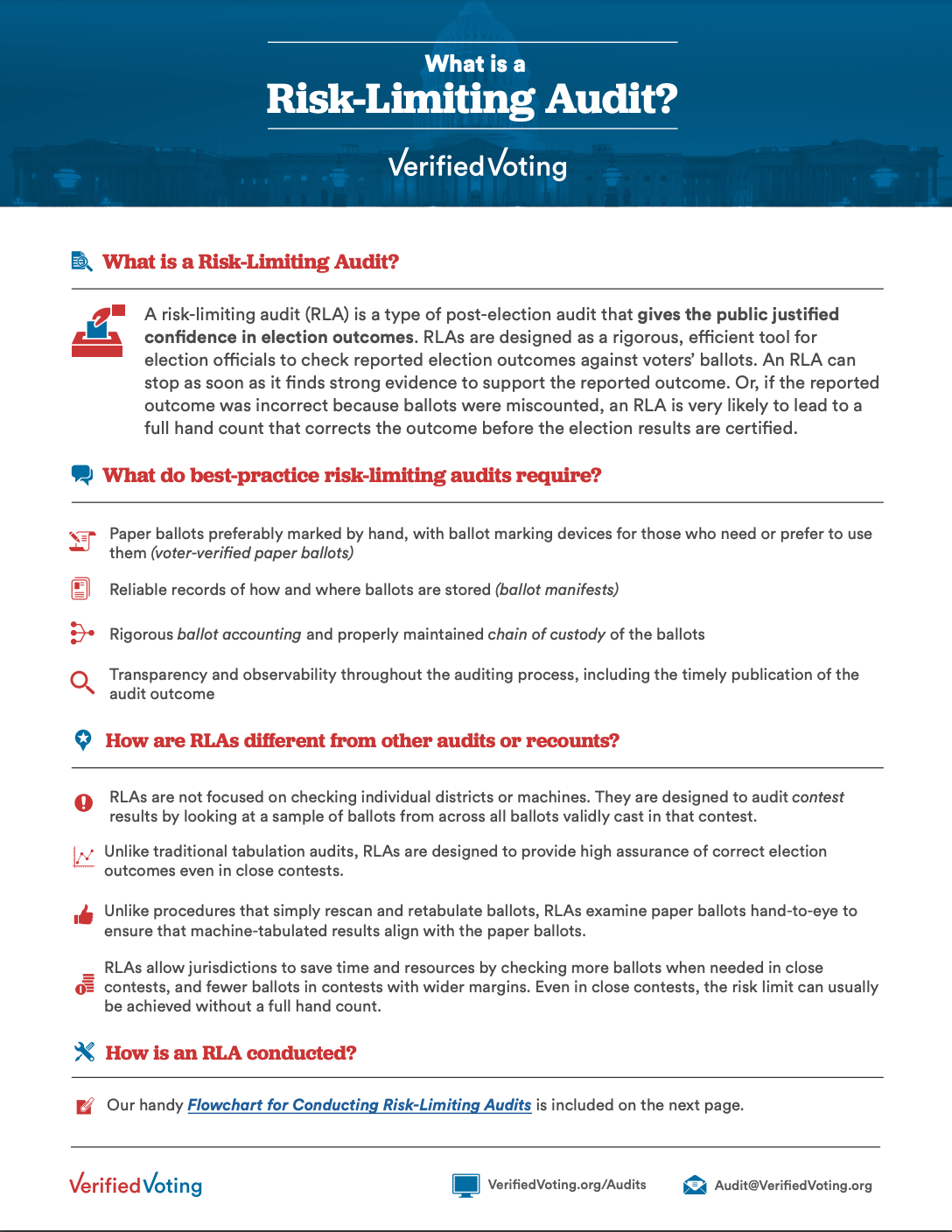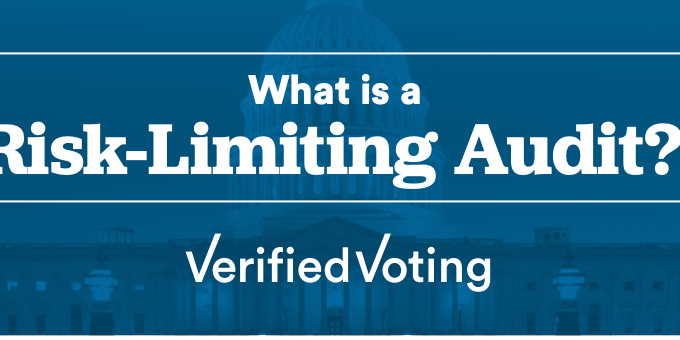
resource
What is a Risk-Limiting Audit?
Date: March 14, 2022
Author: Verified Voting
Issue: Post-Election Audit
Publication Summary
Downloadable resource on the fundamentals of a risk-limiting audit (RLA), including what is needed to conduct an RLA and how an RLA differs from other types of audits.
What is a Risk-Limiting Audit?
A risk-limiting audit (RLA) is a type of post-election audit that gives the public justified confidence in election outcomes. RLAs are designed as a rigorous, efficient tool for election officials to check reported election outcomes against voters’ ballots. An RLA can stop as soon as it finds strong evidence to support the reported outcome. Or, if the reported outcome was incorrect because ballots were miscounted, an RLA is very likely to lead to a full hand count that corrects the outcome before the election results are certified.
What do best-practice risk-limiting audits require?
- Paper ballots preferably marked by hand, with ballot marking devices for those who need or prefer to use them (voter-verified paper ballots)
- Reliable records of how and where ballots are stored (ballot manifests)
- Rigorous ballot accounting and properly maintained chain of custody of the ballots
- Transparency and observability throughout the auditing process, including the timely publication of the audit outcome
How are RLAs different from other audits or recounts?
- RLAs are not focused on checking individual districts or machines. They are designed to audit contest results by looking at a sample of ballots from across all ballots validly cast in that contest
- Unlike traditional tabulation audits, RLAs are designed to provide high assurance of correct election outcomes even in close contests
- Unlike procedures that simply rescan and retabulate ballots, RLAs examine paper ballots hand-to-eye to ensure that machine-tabulated results align with the paper ballots
- RLAs allow jurisdictions to save time and resources by checking more ballots when needed in close contests, and fewer ballots in contests with wider margins. Even in close contests, the risk limit can usually be achieved without a full hand count.
How is an RLA conducted?
Check out our handy flowchart for conducting risk-limiting audits.

